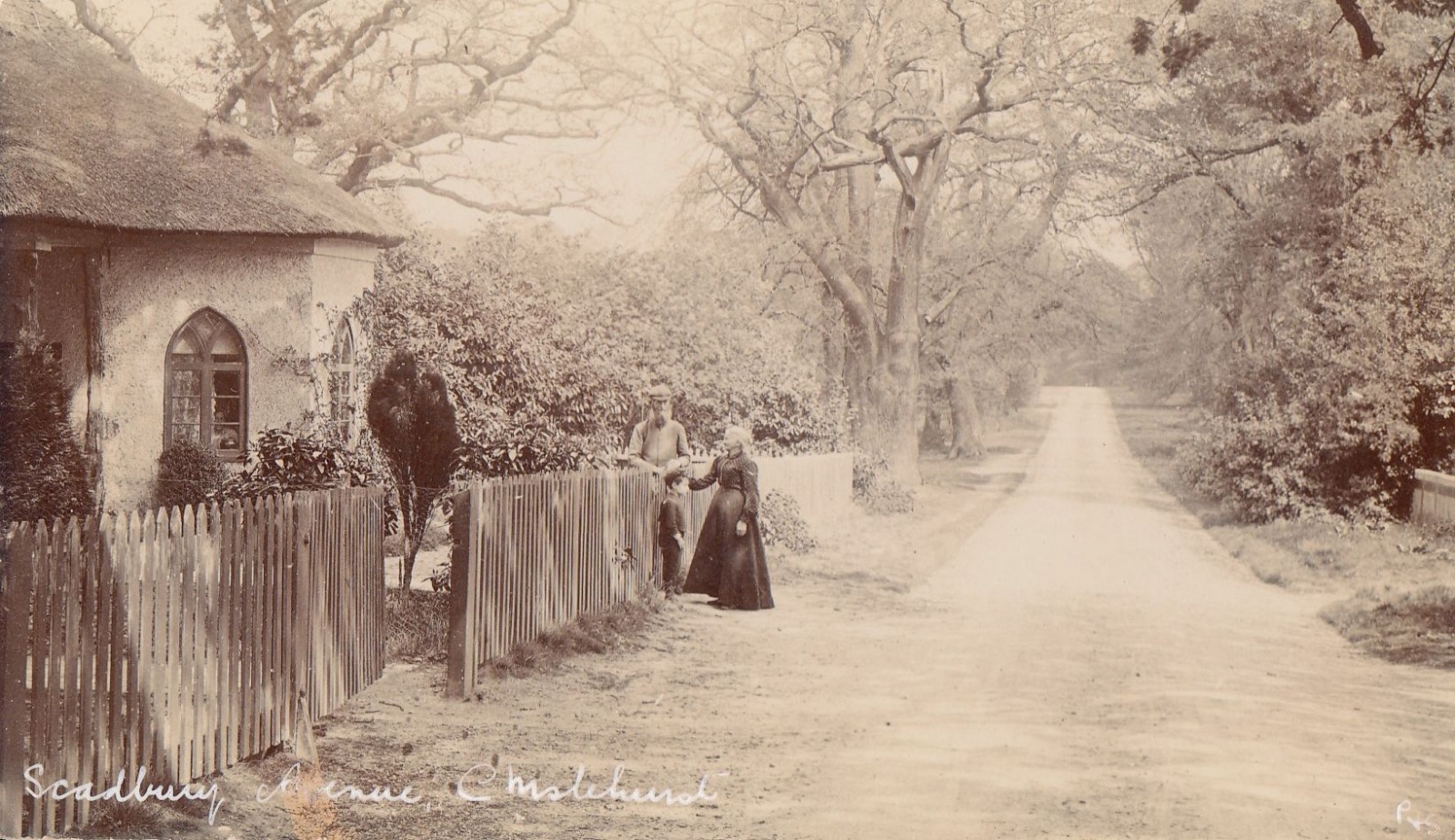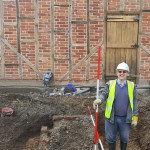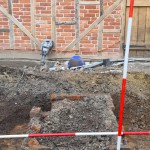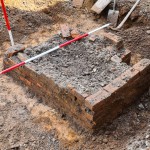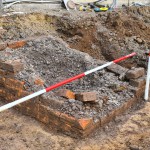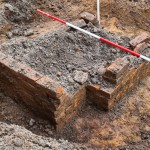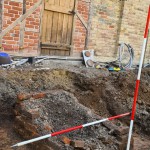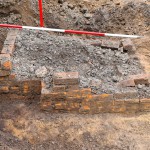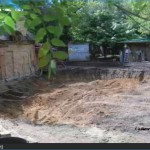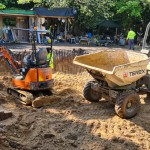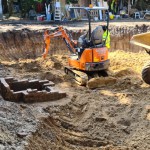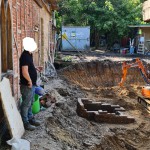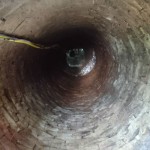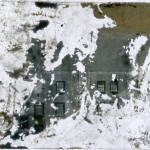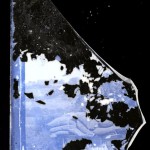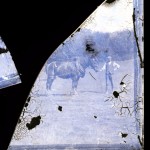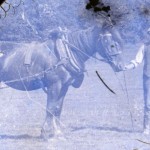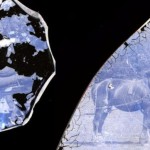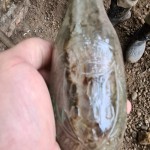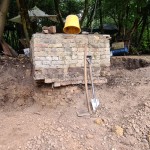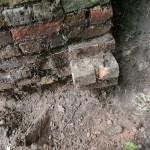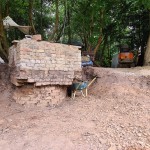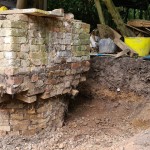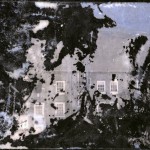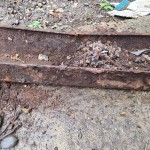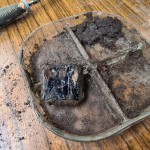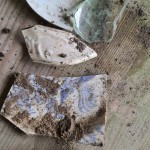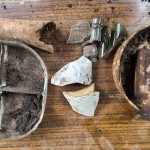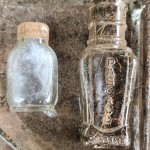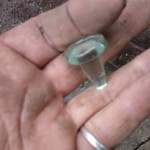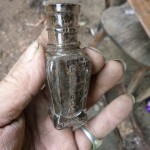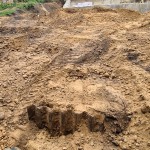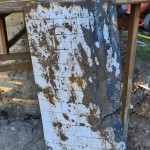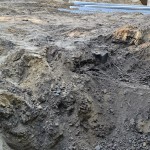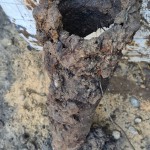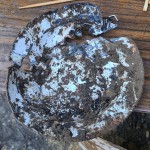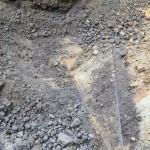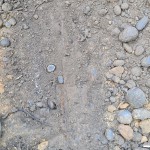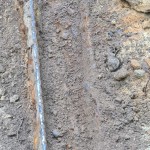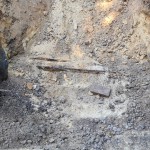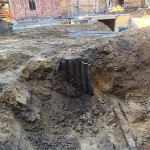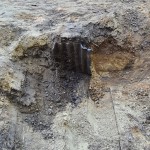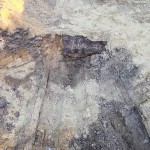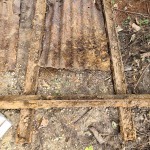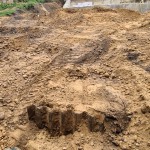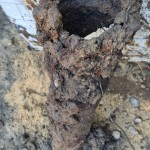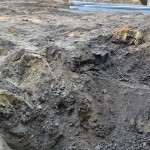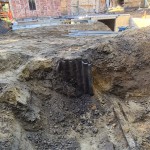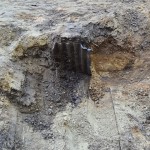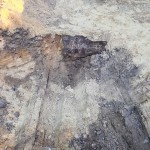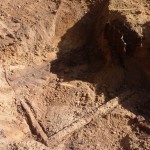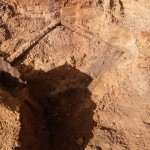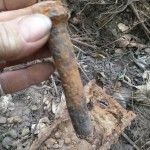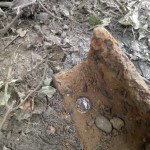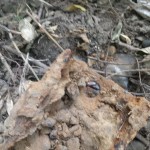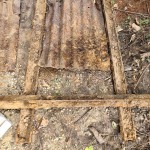History of the Lodge
The Lodge was built around 1800 AD. It is Grade II listed by Historic England as a ‘Cottage Orné’ – i.e. a small cottage with ‘rustic’ features. The windows are Gothic in style. It is typical of the new estate buildings commissioned by aristocratic landowners of the time. The Scadbury estate was then owned by John Thomas Townshend, 2nd Viscount Sydney, (1764-1831). The Lodge was a fashionable addition to the estate.
The original building had a front room with a bay, verandas to the side, with two further rooms behind and had a thatched roof supported by rustic columns. Outside at the back were a wash-house and privy. Water originally came from a well in the back garden East of the building. Subsequently another well was installed West of the building, the original well being converted to a cesspit. The later well was built higher up the slope making us believe that the lower well was being contaminated by runoff from the building. The structure was timber-framed with brick infill. A brick extension was in place by 1868 as shown on an old Ordnance Survey map. This contained a kitchen and living area. Other changes followed and by the 1960s the house had an inside bathroom and the thatched roof had been replaced with tiles.
The Lodge is situated by the drive which was originally the main entrance into the Scadbury estate. The tenant was responsible for opening and closing the gate to members of the family and visitors. Queen Victoria would have passed the Lodge on her visit to Frognal and Scadbury in 1872.
Census records show that the Lodge was normally occupied by the estate gamekeeper or estate bailiff. In 1871 the gamekeeper was Charles Jeal with his wife Maria. Their 8-year old nephew Henry – recorded in the census as a ‘gatekeeper’ – lived with them. In 1911 Robert Thornbury with his wife Emma and three children lived there. He worked at Scadbury for 50 years. The Scadbury estate was owned by the Marsham-Townshend family when the estate was sold to Bromley council in 1983. Some estate properties were retained by the family as they were occupied by tenant estate workers. This house became empty in 2012 and was sold by the family. The current occupiers purchased The Lodge in March 2016.
Michael Meekhams –Orpington and District Archaeological Society – April 2021
Further information – www.odas.org.uk
